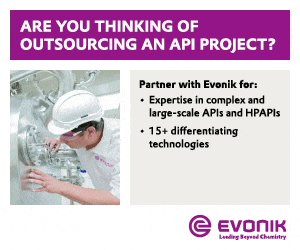In recent years, the combination of greater public awareness of drug safety issues and emerging informatics-based methods for acquiring and analysing medical information have sparked global research initiatives to transform our present largely reactive safety system into one that is proactive, robust, and more useful clinically1. In addition, the emerging importance of patient centricity and increase in publicly available safety data are also driving this change2. As a result, the need for proactive pharmacovigilance or ‘productvigilance’ (PV) is being increasingly acknowledged by all companies, irrespective of their size and product mix.
Regulatory expectations around the safety and risk management of products are undergoing a period of extensive change
Regulatory expectations around the safety and risk management of products are undergoing a period of extensive change, with regulations in developed regions becoming more stringent and regulations in emerging markets evolving rapidly. Growing importance of the emerging markets has caused a shift in the geographic focus of the marketplace. This has led to partnerships among multiple stakeholders across the globe, including generics manufacturers, distributors, service providers and technology providers, thus making the PV scenario quite complex.
Another factor adding to the complexity is the shift in the mix of small and large molecules as well as the therapeutic area focus, and the rigour required to capture safety experience for newer classes of products.
Therefore, while diverse regulations and guidelines govern PV practices, it is also critical to ensure that all safety systems and PV practices employed by an organisation firmly tie into a unified and truly global PV framework, which is an important pre-requisite of proactive PV. Establishing such a framework involves a lot more than simply capturing safety data from affiliates, partners and distributors.
A global PV system: what, why and how?
A PV system is characterised by its structure, processes and desired outcomes. It is defined as a system used by an organisation to fulfil its legal tasks and responsibilities in relation to PV and designed to monitor the safety of authorised medicinal products and detect any change to their risk/benefit balance.
Good Pharmacovigilance Practices (GPV) modules, various guidance documents from the US FDA, ICH guidelines and guidance from other regulatory bodies require that the Marketing Authorisation Holder (MAH) should have a system where all aspects comply with requirements of the applicable regulatory authorities, and safety data on similar products and from geographies other than where the products are licensed, be included.
The principal directive is that a robust, global system has to be in place to capture and manage all Adverse Drug Reactions (ADRs) for all licensed products, in the markets where they are licensed and wherever in the world similar products are sold. In addition to this, a global system has to carry out all of the downstream activities on the safety data that are captured, such as periodic reporting and safety surveillance. There are both commercial and legal implications of non-compliance that could affect current licences, pending approvals and new submissions.
A global PV system has to be an integral part of a company’s Corporate Quality System. It is complex by nature and requires a number of entities to work together in a seamless manner.
Therefore, the system has to take into consideration the accountabilities and responsibilities of all these entities in terms of how they relate to safety directly or indirectly, the interdependencies between them and the harmonisation and standardisation of processes that may be required.
MAHs may use speciality safety consulting and service providers who can recommend and put in place the following key elements that are essential for a successful global PV system:
- Best-in-class processes and Standard Operating Procedures (SOPs) for
- the collection, databasing and reporting of all ADRs;
- continuous and proactive monitoring of safety data, scientific evaluation of benefit-risk based on global use, including detection and evaluation of new signals;
- internal communication and escalation mechanisms for safety concerns;
- effective communication with regulators of new risks, risk minimisation measures, periodic safety reports, post-approval safety studies;
- updates to product information with new knowledge of risks and benefits;
- for tracking new regulations and updates to existing regulations and managing changes required in the system for sustained compliance.
- A comprehensive PV Quality System made up of documented processes, including records management, proactive Root Cause Analysis (RCA), audits of all entities in scope, Corrective and Preventive Actions (CAPAs), and review at regular intervals to verify effectiveness. (GVP 1 requires a written 2–5 year risk-based strategy plan to audit all PV activities).
- Adequate number of competent and trained resources across all areas of operations
- Effective partnership arrangements with distributors, business partners and vendors. These would include Safety Data Exchange Agreements (SDEAs), business partner agreements and agreements with vendors.
- EU-specific requirements such as the PV Systems Master File (PSMF), availability of Local Safety Officers (LSOs) as required by local regulations, Qualified Persons in PV (QPPV), including ensuring required level of empowerment, authority, visibility and involvement, and finally Risk Management Plans (RMPs) for new submissions.
- Corporate level structure is the final and overarching element in the PV system that
- aligns the various in-scope entities;
- enables compliance from all Business Units (BUs), Therapeutic Areas (TAs) and franchises;
- reinforces the bond between the central PV function and individual affiliates. Effective oversight of safety related activities across all entities in scope is essential to the system along with responsiveness to emerging trends of new operating structures, emerging public data sources, such as blogging or social media and greater access to consumers, payers and providers.
Establishing a carefully planned Global PV System Strategy
Establishing a global PV system poses many challenges to all organisations, both small and large, though the challenges may vary with the type of the organisation. For a small company with only a limited number of products, the risk of non-compliance and in-house availability of safety expertise may be a big challenge. For a generics manufacturer, the focus and diligence on product safety and the number of distributors and business partners could be the major challenges. For large companies that have a diverse product mix and vast global reach, ensuring standard global SOPs related to safety and risk management across product categories and regions, and effective oversight of all parties may be the most important challenges.
A carefully planned strategy that takes into consideration both the short-term and long-term business plan of the organisation is fundamental to setting up an effective system. An in-depth analysis of the current state and gap analysis in terms of people, process and technology must be conducted.
A carefully planned strategy that takes into consideration both the short-term and long-term business plan of the organisation is fundamental to setting up an effective system
Careful attention must be paid to the diverse regulation requirements, as well as the global organisational structure and operating model that would facilitate the essential level of oversight and control. The synthesis of a strategic plan that is based on a sound understanding of safety regulations and global operations will lead to an optimal framework for deploying a successful global PV system.
In summary, globalisation of the marketplace and the impact of 21st century technologies on healthcare delivery will create significant challenges and opportunities for all stakeholders in life sciences. PV is in transition, with new sources of medical information and methods for its analysis being explored that will transform the current reactive system into proactive benefit-risk management. Regulations across the globe are gradually evolving towards a more proactive approach, but remain too procedurally focused, often inhibiting innovation, while the technical resources required for effective benefit-risk assessment are still at an early development stage.
For organisations to be successful in today’s environment, it is critical that they ensure all safety systems and PV practices employed are firmly tied into a truly global PV framework. Establishing such a framework requires a carefully thought-out strategy that takes into consideration the accountabilities and responsibilities of all entities, how they relate to safety directly or indirectly and the harmonisation and standardisation of processes that may be required.
References
1. Kahn, S. (2013). ‘Proactive pharmacovigilance – A new model for the 21st century.’ International Pharmaceutical Industry, 5(3), pp. 62–66
2. Moe Alsumidaie, 2014. ‘Highlights from the 2014 Patient Centered Clinical Trials Symposium.’ Applied Clinical Trials. Online at www.appliedclinicaltrialsonline.com/highlights-2014-patient-centered-clinical-trials-symposium [Accessed 06/02/2015]




